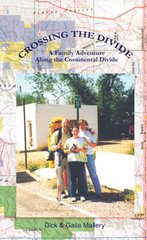
by Joseph Hazelbaker
The Continental Divide Trail (CDT) was created by Congress in 1978 and covers 3,100 miles through five U.S. states from the Canadian to Mexican borders. Nicknamed the "King of Trails" as it will be the longest continuous backcountry trail in the U.S., the CDT is scheduled to be complete in 2008. Currently, seventy percent of the trail is hikeable.
Tackling a trail of this magnitude requires complex planning. Due to its relative youth, and incompleteness, the CDT lacks the "thru-hiking" infrastructure and reconnaissance that more established trails like the Appalachian and Pacific Crest Trails have. If you are planning on hiking the CDT, your first stop should be the Continental Divide Trail Alliance (CDTA). There website is located at www.cdtrail.org.
CDTA manages the trail and publishes and sells several guidebooks and videos that will be critical for you to reference. These include the four volumes of the CDT official guide. You will also find books about the other two long trails in the U.S. helpful. For example, Ray Jardine's PCT Hiker's Handbook is considered not just a classic guidebook for the Pacific Crest Trail, but also a vital handbook for hiking long trails. Other examples of useful crossover resources are the AT Thru-Hiker Planner and the AT meal planner.
In addition, there are several books you should consider that address hiking long trails generally, such as Hiking the Triple Crown: How to Hike America's Longest Trails. Good sites for these resources are:
www.appalachiantrail.org
www.pcta.org
In order to plan hiking the entire length of the CDT, you'll need to put in a lot of planning, more so than in hiking any of the other long trails in the U.S. You will also, undoubtedly, need to do a lot of scouting in advance to determine suitable towns for mail drops and to create emergency contingency plans. The good news is, if you pull off a CDT thru-hike, you'll have an experience that's worth writing about and that few others in the world will have.
Happy trails!












No comments:
Post a Comment